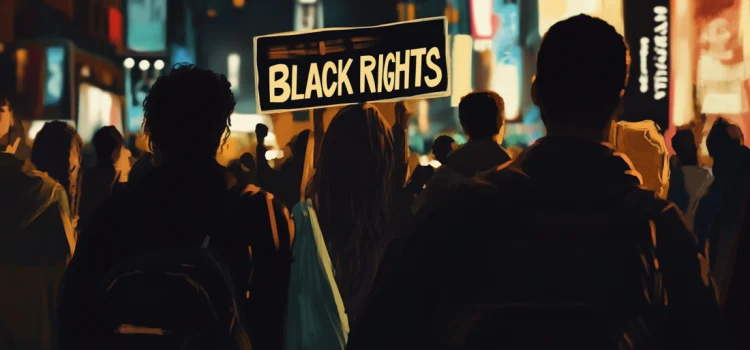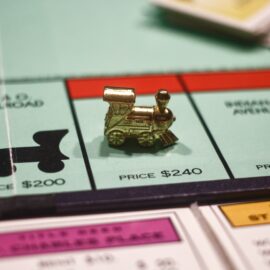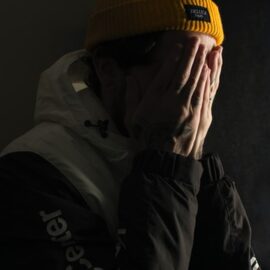

This article is an excerpt from the Shortform book guide to "Unbound" by Tarana Burke. Shortform has the world's best summaries and analyses of books you should be reading.
Like this article? Sign up for a free trial here.
How did Tarana Burke become an activist for Black rights? How did Burke protest against Donald Trump in the Central Park Five case?
Burke explains that she gradually divested from the Catholic church she’d grown up in and chose to attend a public high school. This transition took place because her grandfather, a fiercely pro-Black radical follower of activists like Malcolm X, encouraged her to read books about Black history and to question the church’s complicity in the slave trade.
Keep reading to learn more about Burke’s activism beginnings in high school.
Burke’s Pro-Black Radicalism Empowered Her
In high school, Burke became known as an activist for Black rights, which she defended staunchly when faced with racist lessons and comments from white teachers.
(Shortform note: Historians say that the Pope Nicholas V ignited the transatlantic slave trade in 1452 when he issued an edict called the Dum Diversas. This decree entitled the Portuguese government to enter and permanently enslave the occupants of all non-Christian lands. The church continued to legitimize and profit from the enslavement of Africans and their descendants in the US for centuries. In The Autobiography of Malcolm X, Malcolm X explains that this history led him (and his followers, like Burke’s grandfather) to reject Christianity as a weapon of worldwide oppression.)
Around the same time, Burke’s shame transmuted into anger. Burke explains that when she had conflicts with other girls at her high school, an internal switch flipped—instead of silently putting up with this mistreatment like she would have as a child, she exploded with rage and physically fought back. Standing up for herself made Burke feel empowered after a lifetime of helplessly enduring victimization. Due to the fights she got into, her mother transferred her to a different high school at the end of her freshman year. At her new school, Burke resolved to imitate her role model, Angelou. She stopped fighting, excelled academically, and got her first job—and her boss nominated her to attend a school-sponsored youth leadership conference.
The leadership conference Burke attended opened the door to a healthier outlet for her rage. It was organized by the 21st Century Youth Leadership Movement (21C), through which civil rights-era activists taught young people the ins and outs of community activism. Burke became president of her high school’s chapter of 21C, where she worked with colleagues on the Central Park Five case, which involved the wrongful conviction of five teenage boys of color (one of whom she knew) for the rape of a white female jogger in New York City’s Central Park. Burke says that although she still wasn’t acknowledging or dealing with the abuse she suffered, her work as a pro-Black activist with 21C helped her funnel her rage into a productive cause: fighting oppression.
Burke Began Her Career in Activism by Countering Donald Trump
Burke’s role in the Central Park Five case was to counteract Donald Trump’s media attack on the unjustly accused boys. After their arrest, Trump purchased advertisements in major newspapers and, presuming the boys’ guilt, called for the state to execute them. The boys spent years in adult prisons but were later exonerated. After a Netflix docuseries, When They See Us, brought attention to the case’s injustice in 2019, then-president Trump refused to apologize for the statements he’d made about them.
Ironically, though Burke began her career in activism by fighting against Trump, she and other experts have credited him with making #MeToo possible—the accusations of sexual violence levied against him during his presidency opened the door for larger conversations on the topic.)
| Why Anger, Self-Care, and Resistance Are Vital to Healing From Abuse Because injustice and pain naturally evoke anger, psychologists generally consider anger a healthy part of the trauma recovery process. However, the behaviors anger can lead to aren’t always healthy. Experts suggest that anger motivates actions like self-defense, but it can also motivate unnecessary aggression (the fights Burke describes span both kinds of behavior). Many victims of sexual violence find it difficult to cope with anger in healthy or socially acceptable ways. In these cases, experts recommend pouring your anger into self-care—like Burke did when she shifted from empowering herself via violence to empowering herself via achievement. This recommendation echoes the wisdom of feminist poet Audre Lorde, who argued that self-care is one of the best ways to resist people and systems who would harm you. Experts suggest that activism is another healthy avenue for coping with anger, especially anger derived from injustice. Studies suggest that youth who join activist groups aimed at resisting oppression (like Burke’s 21C) see mental health benefits like improved critical thinking skills and a greater sense of empowerment. However, Burke recommends that survivors of sexual violence prioritize self-care ahead of activism—recovery is hard work, and you shouldn’t overexert yourself. |

———End of Preview———
Like what you just read? Read the rest of the world's best book summary and analysis of Tarana Burke's "Unbound" at Shortform.
Here's what you'll find in our full Unbound summary:
- The origin of the viral phrase “me too”
- What Tarana Burke did to heal from the experience of childhood sexual abuse
- The story of the #MeToo movement






